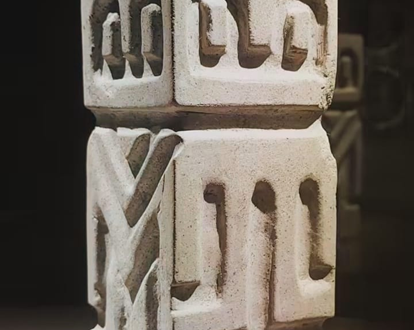Relational and Social Constructionist Consortium of Ecuador
Diego Tapia Figueroa, Ph.D. & Maritza Crespo Balderrama, M.A.

One of our most loyal readers, a person we appreciate and respect (she really exists), is not a resource to pretend that someone is asking this -asking us- these questions: «I have read several of your articles on violence. It would be interesting to have more information on: what are the triggers of intra-family/domestic violence in our society? What makes an adult, within the family nucleus, ‘allow’ the other to exercise violence against him or her or toward the other members of the family? Beyond the pretext of low economic resources that can bind a person to another person (dependency).»
Violence is any and all acts and words perpetrated against someone that deny their autonomy and legitimacy as a human being; any abuse of power; any action, omission, and speech that denies the person the ability to exercise their rights and legitimacy; the actions—and their consequences—that prevent living with a minimum of dignity. Any exchange in which one member places the other in an undesired position or place can be verbal and/or physical, sexual, emotional, or psychological.
Relational-intra-family violence is legitimized and, therefore, perpetuated within a political-cultural system that works by covering up and enthroning social violence as a way of organizing society. This style of social relationships, which seeks to justify, cover up, legitimize, make invisible, and silence intra-family violence, is related to the socially imposed and accepted idea that family matters -couples and children- are part of the space of family intimacy. In this way, the alibi legitimizes violent speeches and actions as the correct and useful way to educate, discipline, command obedience, maintain control, solve conflicts, and teach how to live within a common “should be.”
Gender-based violence, or intra-family violence, is an exercise of abuse of power; it is a phenomenon justified and concealed by cultural codes that naturalize, normalize, multiply, legitimize, and eternalize it from various social, family, educational, health, and justice contexts. Gender-based violence is considered (because it is) a public health problem. In Ecuador, 8 out of 10 women suffer some form of violence from their partners: physical violence, verbal violence, relational violence, psychological violence, sexual violence, emotional violence, patrimonial violence, and vicarious violence.
In this society, the most dangerous relationship for women is having a partner. One of the main causes of violent deaths of women in Ecuador is that they are murdered by their partners; femicide increases month by month, year by year. As we wrote in an article on September 30, 2022 (see bibliography).
In everyday life, relationships -in this patriarchal society- are built from a hierarchical ideology and perspective. Men consider women to be their property. Just as adults, fathers, and mothers consider children to be their property, and think they can oppress, impose, abuse, and exercise cruel and unjust violence «for the good» of the children. Men think the same: women belong to them; they have a notion of «ownership» over women, their bodies, and their being.
Patriarchal culture and ideology have also convinced many women that their owners are men and that they must accept and resign themselves to a position and role of subordination in their relationship with them and their power. Women carry the notion of ownership inside, in their relationship with themselves and others, so the external manifestations of this dominance are not easily perceived; they are «normal»; they are signs of love. This culture has convinced the majority of the population that women are objects or, at most, in an excessive gesture of generosity: second-class beings, equated with primitives or animals. Therefore, their reactions are seen as uncontrolled and irresponsible -hormonal- and merit “placing them,” controlling them, and giving them lessons (even if this implies a knife to the throat). The dogma of male ideology persists: the woman is merely a vagina; she is only an object to be used and abused with total impunity.
The repetition of the woman’s duty to control and oppress her to domesticate her socially (“to be and to seem”) makes the woman reproduce the culture of her oppression, in addition to tyrannizing her with guilt, fear, and various forms of social and cultural violence. The prevailing belief is that women should exist solely and exclusively to meet the needs of men (who, as they become increasingly afraid of losing their power and privileges, practice more physical, sexual, psychological, and emotional abuse and mistreatment against women). It is the needs, aspirations, interests, dreams, and objectives of men that truly count. The needs of women have no sense or reason to be respected and shared. What is more, they probably do not exist; and in the “absurd” hypothesis that someone recognizes them, they do not have to be considered.
Patriarchal Ideology
According to this comfortable patriarchal ideology, the role of women is to gladly serve men, to please them permanently (without «foolish and useless» rebellious or critical tendencies), to be their friend-lover-mother-sister-daughter-ornament-slave-warrior’s rest. Their greatest happiness and fulfillment lie in obeying, satisfying, and always understanding them; in adapting to their needs, renouncing their interests and objectives (judged as inconsequential), abandoning and denying their right to autonomy, independence, and dignity. They are to go through life, society, and the world of men, asking for forgiveness for merely existing.
They must be content with fulfilling the duties that make them worthy of their master, owner, and boss, and even better if they learn to see themselves (and teach others) through the eyes of the one who controls, orders, and commands them (and kills). Their rights will be those granted to them by men, and their obligations to their «owners» will be considered an unquestionable, natural, and eternal right of men. Obviously, when things are «exaggerated,» when the master «goes too far,» their human rights will be invoked and brandished to cover up crimes and criminals. Moralistic and politically correct discourses and practices will be implemented (they will be accepted as “victims,” which is a way of not considering them as equal interlocutors), and rebellions will be instrumentalized and manipulated so as not to threaten the patriarchal structure, maintaining, in a disguised and improved form, the prevailing status quo.
The culture of death imposed by patriarchal society is terrified by women’s free will, their autonomy, their solidarity, and their ability to love and be loved, to politically build something different, free from the oppressive prejudices of culture, religion, family, education, and all the institutions that seek to control, oppress, exploit, and alienate them.
Systematic violence (legitimized by impunity) against women is a crime that follows patriarchal hierarchical structures, which reproduce an oppressive culture where women are considered and treated as disposable objects, “created to please, obey, and be punished.”
In Ecuador, between 7 and 8 out of 10 girls and boys are physically, emotionally, psychologically, and relationally abused (in terms of sexual abuse, it affects between 4 to 5 out of 10 boys and girls; this society is a barbaric society).
This entire system of interactions, within this violent, abusive, and criminal historical, cultural, relational, social, and structural context, is made invisible, silenced, and covered up by families, adults, society, educational institutions, and the State.
There is a belief that violence against women, girls, boys, and adolescents is a useful tool to ensure their control, obedience, education, and discipline—oppressive violence as punishment, which imposes guilt and fear, where one person dominates and tyrannizes, and the other is dominated and abused, to impose a socially accepted «should be» based on prejudices and social beliefs.
In partner violence, there is what is known as the cycle of violence or the circuit of relational violence, which typically follows these stages: a) mutual dependence, from the emotional sphere to the economic aspects that define an amalgamated, conflictual relationship; b) a disruptive event that destabilizes this homeostasis; c) an exchange of coercions that may include shouting, threats, pleas, culminating in an outburst of violence; and finally, d) a phase of repentance. This cycle then repeats itself in an escalating pattern of romantic love, idealization, power struggles, victimization, self-victimization, disrespect, abuse, and mistreatment—violent words and actions, guilt, promises, etc.
The abusive-violent person, who disrespects and violates, holds a deep-rooted sense of ownership (he feels he owns the abused person), and thus believes in his right to impunity regarding his words, actions, and their consequences. He believes he is entitled to be at the center of the abused person’s life, to control that person full-time, and to maintain a hierarchy as an authority over them.
Those with power and privileges seek to impose the ideology that perpetuates the belief that violence against women, girls, boys, and adolescents is a private matter, an individual or family issue. This view assigns labels to justify the violence and achieve resigned and silent acceptance as if nothing can be done because it is a private issue—not a matter of social responsibility—or because it stems from pathology or traumatic pasts requiring psychological archaeology. All these excuses avoid addressing, understanding, confronting, and transforming this phenomenon in its political, economic, cultural, relational, and social injustice, besides its lack of relational ethics contexts.
In the aforementioned article, we argue that in cases of femicide, the State and its institutions are complicit. This is because violence against women is often treated as a secondary issue, with public policies aimed at protecting women and fostering safe, respectful societies being slow to take effect. In both Ecuador and other countries, femicide does not stem merely from the cruelty of individuals but is a consequence of the hetero-patriarchal, sexist, and misogynistic structures that underpin these States. These structures are upheld by men, as well as women who follow the same oppressive patterns, perpetuating narratives of submission, oppression, and violence.
Femicide highlights not only the ineffectiveness of institutions but also represents a deliberate and explicit effort to minimize, conceal, and devalue violence against women, simply because they are women. This environment makes femicide possible and allows physical, psychological, economic, and sexual violence to be normalized. Though political leaders and authorities from all sides of the spectrum may claim otherwise in their hollow, hypocritical speeches, the reality is that they continuously dismiss such violence as isolated incidents of «crimes of passion» or «momentary madness,» rather than recognizing it as systematic control, abuse, and subordination.
These societies operate on the premise that if you are not a man, you have no rights. Those in power -who are supposed to uphold and respect the law- often don’t see it as necessary to protect women and girls. Worse still, the greatest threats to women are found in the most intimate spaces, covered up by the very institutions meant to safeguard them.
The root causes of this violence are structural, historical, and deeply ingrained in patriarchal society. They are perpetuated by stereotypes and prejudices that trivialize, discredit, and generalize the victims, effectively hiding the true scale of femicide. Murderers are not driven by «passion,» «mistakes,» or «provocations.» Rather, they are shaped and educated in patriarchal environments, in families and institutions like the police, military, church, and schools, which foster mistreatment, exploitation, and violence against women.
In therapeutic dialogues with survivors of violence, a key transformation is the creation of a trusting, secure relationship that allows survivors to reclaim their voices. This involves challenging the mystified narratives surrounding their victimization, redefining their stories, and collaboratively constructing new meanings. It is through this process that they can rebuild their memory, envision new futures, and begin to take control of their own lives. This journey is essential for reclaiming their dignity, freedom, and joy.
To achieve this transformation, it is crucial to foster a rich set of relational connections between the individual and their context. This includes accessing assertive resources from their social-relational network to support their autonomy and empower them to develop healthier, more transformative relationships moving forward.
Possible sequence—abbreviated—in the therapeutic process, in the position of social-relational constructionist therapy:
Respect; Curiosity; Acceptance; Trust-vulnerability; Understanding; Deep listening; Kindness; Openness to differences; Reflective conversations (therapy: transformative dialogue); Talking through questions, contextualizing the story; Own voice and multiplicity of voices; Joint construction of new meanings; Without prejudices or stereotyped responses; Relational ethics; Radical presence (with, between, relationships, connections, co-creation of links, tissues, rhizomes); Creativity; Good humor.
In this encounter, in the dialogue with those who experience Gender-Based Violence, it is essential not to pathologize, label, or assume a role of omnipotence. Try to work as a team; permanently seek to do co-therapy. Prevent re-victimizations; raise awareness about this risk. Know how to responsibly refer victims of GBV to the institutions and professionals most appropriate to this context. Try to mobilize support networks in favor of the person.
A consistent position in favor of human rights and against GBV, cruelty, injustice, exploitation, and abuse is required.
Tune into the pain and dilemmas of the clients (authentic respect, human interest, and genuine curiosity to collaborate in their recovery, self-protection, and future well-being). Each person should develop the power of their voice, enabling them to dialogue and exercise the right to be heard. After listening, provide feedback on all the strengths they possess.
A permanent position of a positive connotation focused on assuming the good intentions of those who experienced GBV, is necessary. Legitimize the value of their perceptions from their position. Offer a real space to speak to the process of pain and dilemmas that the person carries. Adults must speak and listen as adults, taking charge of their own lives.
Therapy (as we have said before) also involves confronting social conventions, commonplaces, and prejudices in favor of the client’s process; «disturbing» (introducing significant differences that mobilize new reflections and resources of the client), challenging the relational system—if it is cruel and unjust. Disturbing involves introducing complexity and uncertainty, questioning the established, patriarchal ideology, broadening the worldview, and generating hope and responsible futures.
The RELATIONSHIP between us: To practice «social/relational constructionism,» we focus on the relationship between us, not on things or anyone in particular but on what we can achieve together as a result of the relationship (of the dialogue).
What is relevant: That the person recognizes they can speak, that they are validated and that they discover and mobilize their resources.
Telling the story: Human events only become intelligible after having been told. Through conversations, life experiences and events related to suffering are formed and re-formed. Meanings, understandings, constructions, and reconstructions of realities and self are created and re-created. Being a different human being and professional, taking this position requires and means being more responsible (for the stories we generate together) and acting critically with responsibility.
Space for reflective dialogue: We invite a space for reflective dialogue and meaningful conversations in crisis contexts with communities, families, girls, boys, and adolescents in vulnerable conditions.
Confidence in having their resources: A work based on relational ethics, respect for people, and the confidence that every human being, every family, has its own resources. These should be mobilized actively and creatively so that they can assume their own lives in a new and responsible way.
New possibilities: We constantly seek new possibilities, which we build together, knowing the limitations that exist but striving to overcome them through dialogue, listening, understanding, mutual acceptance, and an assertive vision of interrelations.
Permanent position: Assume a permanent, genuine, and authentic position of respect, curiosity, openness, flexibility, and creativity.
Reflective pragmatics: From the reflective pragmatics of social/relational constructionism, we focus on the relationship between us, on the WITH, which is relationally interwoven. Together, we co-construct and expand the possibilities with dialogue for the co-creation of new futures.
Questions about our contributions to the therapy process:
- Do they contribute?
- Do they matter?
- Are they useful?
- What is different, transformative, and significant that we say and do together?
- How can we take care of our relationships so that we can jointly create life, meaningful life?
- How can we use these ideas, not only to free ourselves but also to be useful for society?
- What happened, how did the relationships that generated transformations come about?
- What kind of future can I contribute to?
We understand dialogue as a permanent learning process, which requires spaces for reflection and accompaniment. These offer opportunities to enjoy, to grow humanly and relationally, and to transform oneself while transforming relational contexts.
As philosopher Jacques Derrida explains: in dialogue, there is no closure; the dialogue that we are in is endless. No word is the last or the first, as every word is already a response and always the focus of new questions.
Basic bibliography:
Patriarchal society – culture of death – women murdered for being women
https://iryse.org/sociedad-patriarcal-cultura-de-muerte-asesinadas-por-ser-mujeres/
Patriarchal society – culture of death – women murdered for being women (Adendoum)
https://iryse.org/sociedad-patriarcal-cultura-de-muerte-asesinadas-por-ser-mujeres-con-adendum/
Culture of good treatment of children and adolescents,
Social-relational constructionism. Joint, meaningful and creative construction of transformation processes in the therapeutic process, in the training of professionals and in clinical supervision. (19/20)
Suggested process to follow in psychotherapeutic and psychosocial care for victims of gender-based violence

English translation by Bruno Tapia Naranjo.



